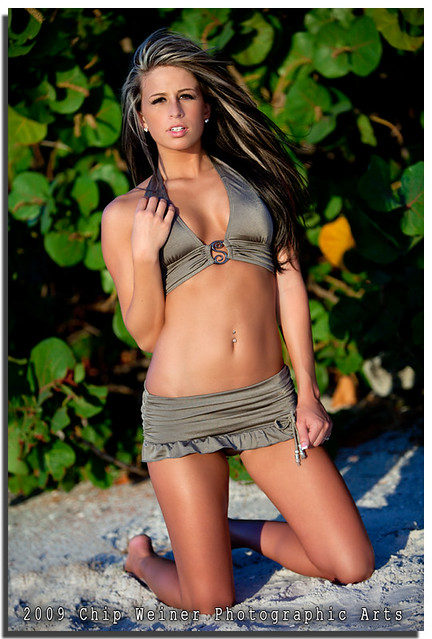 |
| Image shot with sun in the background and flash on the subject. |
Cut it out! If you can, wait until early in the morning or the end of the day to take the best photos. Sports shooters, fashion photographers, and anyone who works outside regularly usually do everything they can to shoot during this part of the day. Sometimes it means getting up at crazy hours to be on location ready to fire when the sun first comes up. The Golden hour is a great time to take portraits! The light is beautiful and it often makes for much nicer photographs. Golden hour has many definitions, but for me it is 20 minutes before the sun comes up an hour after it rises. In the afternoon is about 20-30 minutes before it sets, and at least 30 minutes after it goes below the horizon.
 |
| Strong side light casts a pleasing shadow for many shots. The light early or late in the day is also less intense and allows for a deeper blue sky. This one was taken with a polarizing filter (that's why the sky looks so blue.). |
Here are some reasons why Golden hour works .
The angle of light matters. Remember those pictures you took at Halloween with someone holding the flashlight under their chin? It creates creepy looking shadows on their face (which is great for spooky Halloween shots). The same thing can happen when there is strong un-diffused light overhead creating hard shadows under the eye sockets and chin.. Waiting for golden hour gives you strong sidelight. It can create more depth in your photographs and be much more pleasing than spooky overhead light.
It's called Golden Hour for a reason.The light early in the morning and late in the afternoon is very warm (orange/red/yellow). This color of light is awesome for many types of photography especially for landscape and portraits.
Here's how to do it.
Put the sun behind you and your subject facing it. Look through the viewfinder and make sure that your shadow is not being cast into the composition. Check the shadows on your subjects face (if you're shooting a person) and move them until it is pleasing. Expose correctly and fire away. One thing to be mindful of is squinting. You're making them look into the sun! One technique is to have them close their eyes until you are ready to fire. Ask them on the count of 3 to naturally slowly open their eyes (make sure they don't spring their eyes open and look surprised).
 |
| Golden (or Magic) hour gives you nice directional light. Notice how the shadows fall behind Ashley with no harsh shadows on her face. Make sure your shadow isn't in the picture and your subject isn't squinting too badly! |
If you are going to shoot with the setting (or rising) sun in the background, dial your camera to Program (P) mode and take a meter reading on the horizon (not on the sun, the horizon). Memorize the shutter speed and the f-stop. Turn your camera to manual and dial in those numbers. Here's the important part-either; close your aperture down by at least 2 stops or speed your camera up by 2 full stops. (An alternative is to use your exposure compensation dial and set it to -2) This will be a starting point for shooting sunsets.
Plain sunsets get boring. If you want to shoot a postcard go ahead and take the picture. Now, consider putting something in the foreground (like a person or a flower). Use the same settings but get close to your subject and turn on your flash.
 |
The sun was just rising (6:49AM!) so I got a nice orange glow on the horizon. Using my flash I illuminated this wild flower
|
Your background will be under exposed by a couple of stops, but your flash will light the front of your subject making for an awesome shot.
 |
Sunset pictures are nice. Having something like birds in the foreground adds content and interest to the shot.
|
It's 5:00 somewhere... sunrise or sunset is coming! Break out your camera, find a friend, and go shoot some Golden Hour shots!
Keep Hitting That Shutter Button!
See my info at http://www.chipshotz.com/
Email me here chip@chipshotz.com
See my info at http://www.chipshotz.com/
Email me here chip@chipshotz.com
Become a friend on facebook here http://www.facebook.com/profile.php?id=1485047075
For information on other Tampa photography classes, digital photography classes, and Tampa photography workshops feel free to call me or look under the Tampa Photography Classes section. I also give private individual lessons on camera operation and making better photographs and would love to work with you one on one to make you a better photographer. Photography instruction gift certificates are also available. They make great gifts for the photo enthusiast in your life. Let's talk about what you need! 813-786-7780. See you in class!
Chip Weiner is an award winning photojournalist and food photographer in Tampa. He has been a photography instructor for 10 years.
Copyright Chip Weiner Photographic Arts (2007-2015). All Rights Reserved
.
.

No comments:
Post a Comment